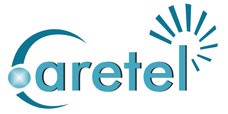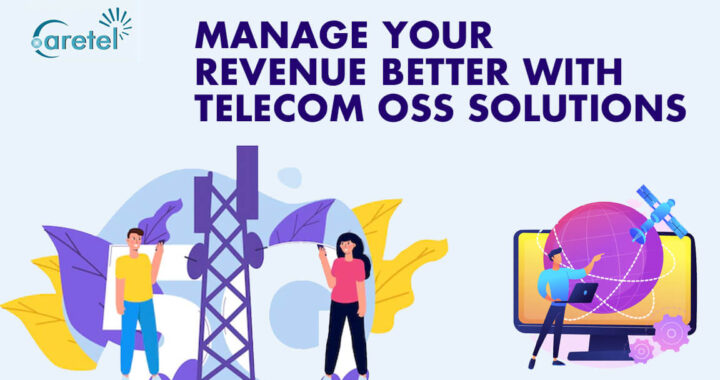A group of enterprise-level software solutions called telecom billing systems are used to automate the telecom billing process. Organizations can cut costs and increase billing accuracy through automation. The system works when a customer purchases or signs up for a provider’s service.
Customers should be able to track their account type, resource balances, history, and other crucial billing information using the telecom billing system design. These telecom OSS solutions combine several customer service components and provide vendors with billing-related information.
To automate their billing process, several companies use bill management software. These vendors include companies that offer wireless communication, phone service, cable and satellite providers, internet service providers, and numerous others. Numerous billing options are provided by the billing system, like Caretel. Next to convergent billing, the most significant features include recurring payments, credit refunds, discount coupons, reporting, and analytics. It interacts with hardware, different networks, third-party applications, tax engines, and payment gateways. The system also provides an API for bulk operations and integration.
Various telecom billing models
Different billing kinds are needed for various consumers and services. Because of this, telecom service providers (TSP) must include all of these types in their services. OSS BSS telecom uses several different billing models. Let’s Analyze a few of the more typical ones.
- Prepaid billing model
We deal with prepaid billing when a customer must pay upfront and can only utilize the services once his account is in good standing.
When a prepaid service is used, the bill management software immediately deducts credit from the customer’s account. The customer receives notifications when his glory is running low while using the service, and the service is instantly terminated once the credit has been exhausted.
- Postpaid billing model
Customers frequently pay for services monthly and utilize them throughout the month. Top telecom billing systems generate a consolidated invoice containing all his charges and the due date after each billing cycle. The client then makes the payment for the services he utilizes. Postpaid billing is the practice of paying for services after they have been used.
Many subscriptions prefer the postpaid billing model, which is frequently associated with an automated repeating billing procedure.
- Pay-per-use billing model
The pay-per-use (PPU) or pay-as-you-go (PAYG) charging model’s basic tenet is relatively straightforward. Customers only pay for the services or products under this usage-based model.
The pay-now billing model, in which the consumer is promptly charged for what he consumes, is an additional variation of the PPU billing model. To use this model, the user must choose his chosen payment method and give the provider permission to charge it. Credit cards or online payment systems like PayPal are both acceptable forms of payment.
- Interconnect and Roaming billing
The words interconnect and roaming billing is used for billing between telecoms for services a customer uses in another network. We know there are additional roaming fees when traveling to another nation, but we are less aware of the details. Although technically not a billing model, some of these OSS BSS telecom charges may be included in the invoices sent to clients depending on the contract.
- Convergent billing and charging functionality
Convergent billing is one of the most critical capabilities of telecom billing software. Let’s make it as simple to understand as we can! Convergent charge and billing refer to a feature of a billing system that enables the creation of a single transparent invoice from all of the invoices from the models mentioned above.
The client will always receive a single invoice outlining what he was charged for during this billing cycle, regardless of whether the service is prepaid, postpaid, subscription-based, or pay-per-use.
What to Look for in Telecom Billing Software
Today, a large variety of companies provide telecom billing services. Before making a decision, it is crucial that you carefully consider their telecom billing software. Gathering requirements and conducting feasibility studies are essential to ensure the system fits your organization’s needs. Here are some things to think about.
Is the entire system scalable? What about the scalability of billing software? Is adding or configuring new modules and capabilities simple enough? For the system to adapt to the needs of your organization and the most current industry rules, vertical and horizontal scalability is crucial. Avoiding unreasonably long configuration and improvement times requires modularization. Can the system be combined with software from other companies? You may link it with many CRMs, enterprise resource planners, gateways, and other potential solutions with good API coverage.
The user experience is a concern. Is it simple to use and learn the system? Although there won’t be much of a learning curve, methods that take a long time to understand will cost you a lot of money. Look for user interfaces that are well-designed, clear, and intuitive. When the user interface is simple to use and pick up, your customers and employees enjoy it. Don’t forget to take pricing alternatives into account. Does the system require a one-time license cost or a subscription service? The pricing of a decent telecom billing software should be flexible, but you also need to consider your deployment alternatives. Is the software deployed locally, in the cloud, or in a hybrid? Most cloud-based systems are offered as a service and include regular upgrades. Systems that are hosted in the cloud are typically more affordable than hybrid or on-premise installations and are easily scalable.
OSS BSS telecom is The next-generation billing software solution
All the factors above were considered when we created and designed our top telecom billing systems. Caretel is a service that runs in the cloud. We chose that strategy since it is unquestionably the subsequent development of software solutions. Because of maintenance concerns and the need for manual patching and updating, many of our clients were experiencing problems with their outdated on-premise billing solutions. Nevertheless, we are highly adaptable when presenting our solution and consider your preferences and needs.
As a result of Caretel’s ability to scale horizontally and vertically, high-performance processing is guaranteed, keeping up with corporate and industrial demands. Due to its well-implemented REST API, combining it with CRMs or other third-party apps is simple. It includes a payment gateway component that enables you to link to several payment processors, including Braintree, Wirecard, Paypal, Stripe, and Authorize.net. Second, the tax gateway component lets you use outside companies like Avalara or Suretax to calculate taxes.
Caretel provides detailed pricing design, customer and subscription administration, and real-time rating as a stand-alone billing and rating system. Complex hierarchies, sophisticated usage-based pricing, and several sharing and discounted options can all be implemented. Additionally, a very user-friendly user interface makes all of these features accessible. Please contact us if you’re looking for a cutting-edge billing solution. Caretel may be precisely what you require

